“The task of individuation is to consciously align ourselves with this source, to surrender to its archetypal energies and allow them to transform us from within. By differentiating and integrating the King, Warrior, Magician, and Lover within us, we can tap into the generative power of the Self and bring forth our unique gifts in service to the world.”
The Theories and Ideas of Robert Moore
1. Who Was Robert Moore Phd?
Robert Moore, Ph.D. (1942-2016) was a pioneering psychoanalyst, theologian, and scholar who made significant contributions to the fields of analytical psychology, spirituality, and archetypal studies. His innovative theories integrated the work of Carl Jung, world mythologies, ritual practices, and psychoanalytic thought to shed light on the deep structures and dynamics of the human psyche. Moore’s prolific career illuminated masculine psychology, the psychology of religion, initiation rites, and the psychodynamics of human destructiveness. This paper provides an in-depth exploration of his key theories and their enduring relevance.
Main Ideas and Key Points:
1. Robert Moore’s work integrates Jungian concepts, world mythologies, ritual practices, and psychoanalytic thought to illuminate the deep structures and dynamics of the human psyche.
2. Central to Moore’s work is the concept of the archetypal Self, which is the regulating center of the psyche and the source of inner wisdom and spiritual transcendence.
3. Moore proposes four fundamental archetypes of the Self: The King, The Warrior, The Magician, and The Lover, each of which shapes different areas of life and presents opportunities for growth.
4. Moore’s model of the four archetypes of mature masculinity (King, Warrior, Magician, Lover) provides a framework for understanding the journey of male individuation and the challenges of developing a positive masculine identity.
5. The shadow aspects of these archetypes (Tyrant, Sadist, Manipulator, Addict) represent immature and destructive forms of masculinity that can lead to dysfunctional behaviors and relationships.
6. Moore also explores the feminine archetypes (Queen, Mother, Wise Woman, Lover) and emphasizes the importance of integrating and balancing masculine and feminine energies within the psyche.
7. Moore’s work on the origins of human destructiveness focuses on the concept of “pathological infantile grandiosity,” a narcissistic defense mechanism that can lead to violence, cruelty, and evil when unchecked.
8. Initiation, ritual, and the creation of sacred space are seen as crucial for facilitating psycho-spiritual transformation and the healthy development of individuals and communities.
9. Moore applies archetypal psychology to the study of organizational life, leadership, and the shadow dynamics that can undermine the health and effectiveness of groups and institutions.
10. Archetypal psychology offers a powerful lens for analyzing cultural myths, political ideologies, and artistic expressions, revealing the deeper psychological patterns and potentials they embody.
11. Moore’s work expands the scope of Jungian psychology, bridging it with other schools of thought and exploring its implications for spirituality, ecology, and cultural transformation.
12. The archetypal perspective provides a framework for understanding the challenges and opportunities of individuation in a globalizing world, emphasizing the need for a more holistic, integrative, and socially engaged approach to psychological growth and development.
2. The Archetypal Self and the Collective Unconscious
Central to Moore’s work was the Jungian concept of the archetypal Self – the regulating center of the psyche and the source of inner wisdom and spiritual transcendence. The Self, expressed through numinous archetypal images like the divine couple (King and Queen, God and Goddess), manifests in dreams, myths, fairy tales, and the world’s religions. Moore proposed four fundamental manifestations of the Self’s archetypal imagery: The Sovereign (King/Queen), The Warrior, The Magician, and The Lover. Each of these energies shapes different arenas of life, presenting specific psycho-spiritual challenges and opportunities for growth.
Drawing on Jung’s theory of the collective unconscious, Moore saw these archetypes as universal patterns that structure the psyche. They form the basic building blocks of the personality, providing a blueprint for human development and the unfolding of consciousness. By engaging these archetypes consciously, Moore argued, we can tap into the deep wisdom and transformative power of the Self – and bring our lives into alignment with its evolutionary unfoldings.
3. The Four Archetypes of Mature Masculinity
3.1. The King
One of Moore’s most influential contributions was his model of the four foundational archetypes of the mature masculine psyche: King, Warrior, Magician, and Lover. The King archetype, Moore proposed, provides the psyche with an inner sense of order, centeredness, and generativity. It is the energy of just and creative rulership, both in the inner kingdom of the Self and in one’s outer-world engagements. When this archetype is active, a man feels secure in his own authority, empowered to bless and empower others, and responsible to a higher sovereignty. He can mirror and mediate the King archetype’s transpersonal energies of stability, fertility, and abundance into the world.
3.2. The Warrior
The Warrior archetype empowers a man to set boundaries, defend the innocent, and fight for a just cause. It is the energy of decisive action, discipline, and strength in the service of a higher good. The mature Warrior, Moore wrote, channels aggression constructively – not to dominate or destroy, but to protect, serve, and strive for excellence. He is a spiritual warrior, fighting the inner battle against inertia, fear, and egotism. By aligning with the transpersonal Warrior, a man accesses the courage to live his deepest truth and enact his sacred purpose.
3.3. The Magician
The Magician archetype energizes a man with awareness, insight, and the power of transformation. It is the energy of the seer, the healer, and the sage. The Magician, Moore argued, attunes a man to the unseen realms – to the mysteries of the unconscious, the subtleties of situations, and the hidden dynamics of relationships. He can detach from conventional perspectives, part the veils of illusion, and access transpersonal sources of wisdom and renewal. The Magician empowers a man to be a catalyst of change, an agent of healing, and a conduit of innovation.
3.4. The Lover
The Lover archetype fills a man with passion, sensuality, and the capacity for deep connection – with himself, others, and life itself. It is the energy of eros, of life-affirming creativity and communion. The mature Lover, Moore wrote, unites sensitivity with sensuality, empathy with ardor. He is in touch with his feelings and those of others, attuned to beauty, and alive to the aesthetic dimension of experience. The Lover empowers a man to embrace and celebrate life, to merge with the love-object, and to surrender to the currents of the heart.
3.5. The Shadow Aspects of Masculine Archetypes
However, Moore warned, the lack of male initiation and mentoring in the modern world often leaves these potentials undeveloped or distorted in men – fueling destructive behaviors like toxic narcissism, aggression, manipulation, and sexual acting out. Immature forms of the King, Warrior, Magician and Lover possess the personality, leading to what Moore called “Boy Psychology” in adult men.
The Shadow King emerges as the Tyrant – an insecure man who compensates with grandiosity, seeks to dominate others, and cannot tolerate criticism or vulnerability. The Shadow Warrior manifests as the Sadist – a man who takes pleasure in violence, who abuses his strength, and who bullies or attacks the weak. The Shadow Magician appears as the Manipulator – a man who uses his intellect and verbal skills to deceive, seduce, and exploit others for his gain. The Shadow Lover takes the form of the Addicted Lover – a man who cannot tolerate the demands of real intimacy, who pursues sex compulsively, and whose sensualism devolves into escapism.
These shadow forms of the masculine archetypes, Moore argued, are the result of psychological wounding, often stemming from early relational trauma and lack of healthy initiation. They represent a man’s basic mistrust of the world, his fear of his own depths, and his inability to channel the transpersonal energies constructively. Much of Moore’s work aimed to provide maps for transforming the shadow – for moving from Boy Psychology to Man Psychology through the conscious development of the mature masculine archetypes.
4. The Deep Feminine and the Inner Marriage
4.1. The Queen
Just as there are four foundational archetypes of mature masculinity, Moore proposed, there are four corresponding archetypes of the mature feminine psyche: Queen, Mother, Wise Woman, and Lover. The Queen archetype, like the King, provides an inner sense of sovereignty, wholeness, and creative power. It is the energy of the Self in its feminine form – what Jung called the anima in men and the feminine Self in women. The Queen confers an inner sense of authority, dignity, and worth that is not dependent on external validation. She is the source of life-giving energy, the bestower of blessings, and the protector of the sacred.
4.2. The Mother
The Mother archetype is the source of unconditional love, nurturing, and support. It is the energy of compassionate care, both for oneself and for others. The mature Mother, Moore argued, provides a safe haven of acceptance and emotional nourishment. She attunes empathically to the needs of others and knows how to comfort, soothe, and encourage. The Mother also fiercely protects the vulnerable and fights for the welfare of her children. She is the source of resilience, faith, and the will to thrive.
4.3. The Wise Woman
The Wise Woman archetype is the feminine counterpart to the Magician. She is the carrier of deep intuitive wisdom, the keeper of the mysteries, and the knower of the soul. The Wise Woman, Moore wrote, is in touch with the cycles of nature, the rhythms of the body, and the timeless realm of the archetypal psyche. She can mediate between the worlds, bridge conscious and unconscious, and guide others through the initiatory passages of transformation. The Wise Woman is a seer, a healer, and a midwife of the soul.
4.4. The Lover
The Lover archetype in its feminine form is the energy of receptivity, sensuality, and life-affirming passion. She is the “Yin” principle of openness, softness, and allurement that balances the masculine “Yang” of assertiveness, firmness, and pursuit. The mature Lover, Moore argued, knows how to embrace her own desirability, nourish her sensual nature, and invite loving connection. She can surrender to the senses, to the body’s wisdom, and to the flow of intimate communion. The Lover is the source of joy, creativity, and the rapture of union.
4.5. Integrating Masculine and Feminine
Moore viewed psycho-spiritual wholeness as involving the inner marriage of masculine and feminine energies. Jungian individuation, he argued, requires men to come into relationship with both their inner King and Queen, and women with both their inner Queen and King. The goal is not the erasure of difference but the conscious integration and balancing of these polar energies. As we develop psychological androgyny, we gain access to the full spectrum of capacities within. We can cultivate both strength and vulnerability, action and receptivity, thinking and feeling, agency and communion.
This inner consummation, Moore believed, is crucial for healthy relationships and the healing of the collective. By reclaiming the disowned “other” within, we can move beyond the adversarial gender dynamics that plague our world. We can forge new forms of partnership, grounded in deep mutual understanding and respect for difference. Psychotherapy, he argued, must support the differentiation and creative union of the inner masculine and feminine. It must help us to embrace the full complexity of our beings – and to birth more integrative ways of embodying our shared humanity.
5. The Archetypal Shadow and Human Destructiveness
5.1. The Origins of Human Evil
Later in his career, Moore probed the depths of human evil, mapping how violence and destructiveness arise from the “archetypal shadow” – a primitive layer of the unconscious filled with dissociated traumatic experiences and unintegrated archetypal energies. At the core of human evil, he located the psychological dynamic of “pathological infantile grandiosity” – an unconscious inflation of the ego that leads to toxic narcissism, splitting, and the acting out of dissociated shadow elements.
This dynamic, Moore argued, has deep developmental roots. It arises from early experiences of overwhelming stress that rupture the child’s emerging self. Faced with an unresponsive or abusive caregiver, the infant feels profoundly helpless, impotent, and filled with rage. To defend against this intolerable state, the psyche splits – dissociating the traumatic feelings and fantasies into the unconscious. The ego then erects a grandiose false self, identified with omnipotence and untouchability. Secretly, however, this façade covers a festering inner wound – a volcanic reservoir of shame and fear.
5.2. Pathological Infantile Grandiosity
In Moore’s model, pathological grandiosity persists as a deep structural flaw in the adult personality. Outwardly, the person may present as arrogant, entitled, and disdainful of vulnerability. Inwardly, however, he remains frozen in infantile helplessness and dread. The grandiose defenses cut him off from authentic sources of soothing and connection, both within and without. Lacking true self-esteem and the capacity for empathy, he feels chronically empty, bored, and existentially terrified.
To manage these intolerable feeling-states, the grandiose personality compulsively seeks pseudo-sources of validation and excitement. He may pursue prestige, power, wealth, or celebrity as substitutes for genuine self-worth. He may numb his inner deadness with addictions and thrill-seeking. Most disturbingly, he may turn to the covert abuse of others as a perverse source of aliveness and control. By sadistically dominating the weak, he gains a momentary illusion of triumph over his unconscious fears.
5.3. Confronting the Shadow
For Moore, the pathological grandiosity dynamic is a key driver of human destructiveness, both on the individual and collective levels. When this shadow energy possesses the personality, it can unleash acts of tremendous cruelty and evil. Grandiosity fueled the terrors of Hitler, Stalin, and Pol Pot – and countless everyday abuses. In groups and organizations, it generates toxic power dynamics, dehumanization, and the rationalization of harm. On the global stage, it drives arms races, environmental destruction, and the perpetration of atrocities.
To effectively confront human evil, Moore argued, we must understand its archetypal roots. We must recognize how our early wounding and misattuned socialization breed pathological grandiosity. By making this shadow dynamic conscious, both individually and collectively, we can begin to contain its destructive expressions. Psychotherapy plays a crucial role by creating a safe space for the ego to encounter the shadow. By embracing our vulnerability and processing our dissociated pain, we can begin to dis-identify from grandiosity. We can connect with genuine sources of self-worth and empathy – and channel archetypal energies in life-affirming ways.
At the same time, Moore argued, we need strong moral and cultural containers to check grandiosity’s worst excesses. We need ethical norms, social feedback loops, and institutions of accountability to inhibit people from acting out their shadow drives. We need myths and practices that promote humility, compassion, and reverence for life. Ultimately, Moore believed, containing evil requires the cultivation of mature spiritual consciousness. By anchoring the ego in transpersonal sources of wisdom and love, we become more resistant to grandiosity’s pull. We can let go of our narcissistic illusions and embrace the responsibilities of the Self.
6. Initiation, Ritual and Sacred Space
6.1. The Archetypal Process of Initiation
A central focus of Moore’s work was the archetypal process of initiation. Encoded in the collective unconscious, he argued, is an innate pattern for the psycho-spiritual transformation and empowerment of the individual. Traditional cultures intuited this archetypal process, crafting rituals and myths to channel it for their members’ development. Initiation, Moore wrote, involves a rupture from the familiar, a descent into a liminal state, an ordeal or symbolic death, and a return to the community with a new identity and expanded capacities.
This archetypal pattern, Moore believed, reflects the deep structure of psychic growth. It is the ego’s natural way of shedding old identifications, connecting with the Self, and being reborn into greater wholeness. In indigenous initiation rites, the tribe orchestrates this transformation in alignment with the collective unconscious. The elders create a sacred container, guide the initiate into the underworld, and midwife his psychic death and rebirth. Through this process, the individual is initiated into the tribe’s wisdom, mythology, and spiritual worldview. He is empowered to take up his adult role and responsibilities.
6.2. Elements of Initiation Rites
Initiation rites, Moore showed, universally utilize certain key elements to catalyze the archetypal transformation:
Sacred Space:
The rite occurs in a consecrated area, set apart from the profane world. This container creates a vessel for the numinous to enter and reorganize the psyche.
Ritual Ordeals:
The initiate undergoes tests and challenges that push him beyond his ego limitations. These ordeals simultaneously humble and empower him, forging a new relationship to the transpersonal.
Symbolic Death:
At the core of the rite is a confrontation with mortality, often involving ritual burial or dismemberment. This allows the initiate to let go of his old identity and be reborn into a larger mythos.
Wisdom of the Elders:
The tribal elders transmit their sacred knowledge to the initiate, anchoring him in the lineage of memory and meaning. They serve as transpersonal role models and guides.
Cosmological Attunement:
The rite aligns the initiate with the cycles of nature, the spirit world, and the mythic dimension of the cosmos. He awakens to a sacred order that transcends the personal ego.
Community Bonding:
The rite solidifies the initiate’s deep bond with the community. Through shared ordeal and celebration, he experiences the power of collective identity and support.
6.3. The Hunger for Initiation in the Modern World
In the modern world, Moore lamented, the lack of structured initiatory pathways leaves individuals struggling to mature. The psyche’s innate need for ritual transformation goes unfulfilled, fueling a deep hunger for experiential encounters with the sacred. This initiatory void, he believed, breeds alienation, moral confusion, and a pervasive sense of “soul loss.”
Lacking cultural rituals to midwife their growth, many people remain stuck in adolescent holding patterns. They may engage in self-destructive behaviors, pursue grandiose fantasies, or collapse into apathy and despair. On a collective level, the initiatory vacuum generates toxic social dynamics and large-scale crises of meaning. Moore saw evidence of this in soaring addiction rates, the rise of fundamentalism, and the allure of authoritarian ideologies – counterfeit solutions to our yearning for true adulthood and spiritual identity.
6.4. Psychotherapy as Modern Initiation
For Moore, the task of a renewed psychology and spirituality is to address this initiatory hunger – to craft culturally-relevant rites of passage and mythologies of transformation. While traditional forms may no longer suffice, their archetypal patterns can be adapted to the needs of the modern psyche. The challenge is to create new containers and processes that catalyze authentic ego-Self encounters and community reintegration.
Psychotherapy, Moore believed, can potentially serve this initiatory function. By crafting a ritual space and guiding the client into liminal soul-work, the therapist can midwife a microcosmic rite of passage. Like the tribal elders, she can hold the client through the ordeals of shadow-encounter, dissolution, and reconstitution
7. Myth, Ritual and the Renewal of Culture
7.1. The Power of Myth Moore
was deeply influenced by the work of mythologist Joseph Campbell, who argued that myths are the “masks of God” – symbolic expressions of the archetypal realities that structure existence. For Campbell, myths serve vital psychological and cultural functions. They encode a society’s wisdom about the mysteries of life, provide idealizations to live by, and connect the individual to an overarching sacred narrative.
Moore built on these insights, arguing that myths are essential for the health of the psyche and the cohesion of communities. Myths, he wrote, give shape to the archetypal energies erupting from the collective unconscious. They channel these powers into meaningful storylines, characters, and imagery that the ego can relate to and be guided by. By participating imaginatively in a mythic narrative, the individual can access transpersonal sources of identity, purpose, and transformation.
Myths also serve to weave individuals into a shared web of meaning. They provide a common symbolic language, a reservoir of cultural memory, and a framework for navigating life’s mysteries. In traditional societies, the tribal myth imparted through initiation gives each member a sacred role, a place in the cosmological order. It aligns the community around shared values, beliefs, and ritual enactments that affirm their spiritual kinship.
7.2. Ritual and the Sacred
For Moore, myth and ritual are inextricably intertwined. Rituals are the embodied expressions of mythic truths – the means by which sacred stories are woven into the fabric of lived experience. Through ritual enactment, the archetypal energies of the myth are invoked, made palpable, and integrated into the community. Rituals serve to consecrate space and time, to mark life transitions, and to bring individuals into synchronistic attunement with the numinous.
In Moore’s worldview, human beings possess an innate capacity for ritual – a primal need to enact sacred patterns and commune with spiritual realities. Rituals activate the deep strata of the psyche where archetypal forces dwell. They provide a vessel for the ego to safely encounter and be transformed by these powers. When ritual is absent or impoverished, Moore warned, the archetypal energies emerge in chaotic, uncontained ways – through individual neuroses, social upheavals, or destructive acting out.
The sacred, for Moore, is not a metaphysical abstraction but a living reality that seeks to permeate human existence. It is the mysterium tremendum et fascinans – the awe-inspiring yet alluring presence that Rudolf Otto saw as the essence of numinous experience. The sacred is the eruption of eternity into time, the in-breaking of archetypal meaning into the mundane world. A culture’s rituals and sacred sites are where this ultimate reality becomes immanent, tangible, and communally accessible.
7.3. Re-visioning Myths for Our Time
One of the great challenges of our era, Moore believed, is the loss of a shared mythos. The traditional religious narratives that once wove us into a sacred canopy have unraveled under the pressures of modernity. Science, secularization, and the global clash of cultures have fragmented our collective storyline. We find ourselves in a meaning vacuum, cut off from the archetypal wellsprings of identity and purpose.
In this context, Moore argued, we need to re-vision our myths – to create new sacred narratives aligned with our time. This is not a matter of fabricating stories from thin air, but of tapping into the archetypal currents emerging in the modern psyche. Artists, visionaries, and depth psychologists can serve as cultural midwives in this process. By attuning to the dream of the collective, they can give voice to the myths that want to be born.
These emerging myths, Moore suggested, will integrate the wisdom of premodern traditions with the insights of contemporary science and psychology. They will provide a spiritual framework for navigating a globalizing, ecologically imperiled world. They will offer regenerative visions of technology, economic life, and human identity. At the heart of this new mythology, Moore envisioned an eco-spiritual worldview – a sacralizing of the Earth and the cosmos as the living matrix in which the human drama unfolds.
8. Spirituality and the Encounter with the Self
8.1. The Self as Spiritual Center
Moore’s psychology was deeply informed by a transpersonal vision of human development. For Moore, the goal of individuation is not merely the strengthening of the ego, but its surrender to and transformation by the Self. The Self, in Moore’s understanding, is not only the integrating center of the psyche but also a doorway to spiritual realities that transcend the personal.
Drawing on Jung, Moore saw the Self as the imago Dei within – the God-image at the core of the soul. The Self is our connection to the ultimate mystery, the sacred ground from which our being springs. It is the source of life-meaning, the wellspring of archetypal wisdom and guidance. When the ego contacts the Self through dreams, visions, or numinous experiences, it tastes the eternal. It feels itself embraced by a loving presence and senses a higher calling.
This Self, however, is not a static entity but a dynamic process – an ongoing flow of creative unfolding. The Self, Moore wrote, is the “God within” who seeks to incarnate in the world through the individual. It urges the ego to bring its transpersonal resources into embodied expression – to birth the divine in the human realm. As we align with the Self’s promptings, we become vessels for its archetypal energies. We discover our sacred purpose, our unique ways of serving life’s evolutionary aim.
8.2. Individuation and Spiritual Practice
For Moore, individuation is the process by which we consciously collaborate with the Self’s unfolding. It is the ego’s journey of surrender and transformation – the alchemical opus through which it is purified of its attachments and reborn in Spirit. This process, Moore argued, requires more than intellectual insight. It demands an experiential encounter with the numinous, a direct grappling with the sacred.
To facilitate this encounter, Moore pointed to the wisdom of contemplative traditions. Practices like meditation, prayer, and ritual, he suggested, are technologies of Self-realization. They quiet the ego’s chatter, refine its attunement, and open it to transpersonal realities. Through sustained spiritual practice, we create a vessel for divine energies to enter the psyche and re-pattern it from within.
Moore was particularly drawn to the initiatory disciplines of shamanism, mysticism, and depth psychology. These “archaic techniques of ecstasy,” as Mircea Eliade called them, plunge the practitioner into the depths of the soul. Through journeys of symbolic death and rebirth, they radically transform the ego’s structure. The shaman’s descent to the underworld, the mystic’s dark night of the soul, the analysand’s confrontation with the unconscious – these are initiatory portals to the Self.
As we undergo this spiritual crucible, Moore suggested, we are stripped of our false identities. We encounter the archetypal forces that shape our being, both light and dark. We die to the ego’s illusions and awaken to a vaster, more luminous identity. The Self gradually becomes the center of our lives, imbuing our actions with meaning and presence. We become, in St. Paul’s words, “new creations” – vessels for the sacred to shine through.
8.3. Archetypal Psychology and World Spirituality
Moore saw archetypal psychology not only as a framework for individual growth but also as a bridge between the world’s spiritual traditions. Beneath the diversity of myths, symbols, and practices, he discerned a common core – a universal initiatory pattern aimed at Self-realization. The hero’s journey, the death-rebirth motif, the sacred marriage of opposites – these archetypal themes appeared across cultures, reflecting the deep structures of transformation.
By illuminating these shared patterns, Moore believed, archetypal psychology could help forge a world spirituality. It could provide a common language for interfaith dialogue, a basis for mutual understanding. Differences would remain, but they could be seen as unique inflections of an underlying unity. As we recognize the archetypes at play in each other’s myths and practices, we discover our spiritual kinship.
This global vision, Moore hoped, could serve as a counterweight to the divisiveness of our times. In an era of clashing fundamentalisms, archetypal psychology invites us to look beneath dogmas to the experiential core of faith. It helps us to see how the sacred expresses itself in myriad ways, seeking to awaken us to our depths. By honoring this diversity-in-unity, we can begin to weave a new spiritual fabric for our fragmented world.
9. Archetypal Psychology and Human Development
9.1. Stages of Archetypal Unfoldment
Moore extended Jung’s concept of individuation into a comprehensive developmental vision. Drawing on mythic and cross-cultural patterns, he mapped the lifelong journey of the soul – the archetypal stages that shape our growth from birth to death. These stages, he argued, are not merely personal but reflect the transpersonal unfolding of the Self.
The journey begins with the “paradise” of infancy – a state of unconscious unity with the mother and the environment. Here, the archetypal energies are experience as a diffuse, oceanic presence, not yet differentiated into distinct forms. With the rise of the ego, the child enters the “magical” stage, where the archetypes appear as fantastical, larger-than-life figures. The psyche is populated with demons and fairies, sorcerers and spirits – imaginal beings who shape the child’s expanding world.
In the “heroic” stage of adolescence, the ego begins to assert its independence and test its powers. The archetypes now take the form of idealized figures – the superhero, the rebel, the explorer – that the youth identifies with and strives to emulate. This is a time of both grandiosity and vulnerability, as the ego struggles to find its place in a world of challenges and unknowns.
With the transition to adulthood, the archetypes assume more mature, socially-adapted forms. The King becomes the leader or parent, the Warrior the protector or activist, the Magician the professional or expert, the Lover the partner or caregiver. These roles provide channels for responsible, generative action in the world. Yet they can also become rigid masks that cut the ego off from its depths.
In midlife, a crisis often erupts as the ego confronts the limitations of its adopted identities. The archetypes now appear as disruptive forces, breaking down old structures to make way for rebirth. The King faces dethronement, the Warrior goes into spiritual battle, the Magician descends to the underworld, the Lover experiences the dark night of the soul. If navigated consciously, this ordeal can lead to a profound awakening – a “return to the Self” and its transpersonal resources.
As we enter the final stages of life, the archetypes reveal their most numinous faces. The Elder embodies transpersonal wisdom, the Sage points to eternal truths, the Crone midwifes the mysteries of death and renewal. Having weathered the initiatory journey, the ego now yields to the Self’s guidance. It prepares to cross the threshold, to return its gifts to the archetypal source. Death becomes an opportunity for ultimate transformation – a liberation into the infinite.
9.2. Archetypes and the Life Cycle
For Moore, this archetypal unfolding is not a linear ascent but a spiraling dance – an eternal return to the same basic patterns at higher levels of integration. At each stage, we are challenged to encounter the archetypes anew, to engage them with increasing consciousness and complexity. We are called to weave their energies into an authentic, embodied expression of our deepest selfhood.
This process is rarely smooth or automatic. It requires conscious participation, a willingness to grapple with the psyche’s challenges. Each stage brings its own tasks and trials, its own opportunities for growth or stagnation. If we fail to engage the archetypal currents, we become stuck in immature or distorted forms. The King becomes the Tyrant, the Warrior the Sadist, the Magician the Manipulator, the Lover the Addict. These shadow patterns can persist throughout life, breeding suffering for self and others.
To move through the stages, Moore argued, we need rituals of initiation and transition. In traditional cultures, rites of passage marked the major thresholds of life, providing containers for archetypal transformation. Birth rituals welcomed the infant into the human community, puberty rites guided the youth into adulthood, marriage consecrated the union of opposites, and funeral rites facilitated the return to the ancestors. These rituals encoded the deep wisdom of the psyche, aligning human development with transpersonal realities.
In our time, Moore lamented, we have lost touch with these collective rites. Our initiations are often haphazard, unsupported, or absent altogether. Deprived of sacred containers, we struggle to navigate life’s passages. We may remain stuck in adolescent patterns, forever seeking the elusive boon of adulthood. Or we may prematurely harden into social roles, cut off from the renewing powers of the unconscious.
To address this crisis, Moore called for a renewal of initiatory practices aligned with the needs of the modern psyche. He envisioned a wide range of rituals and programs – from wilderness quests and vision fasts to contemplative retreats and artistic rites of passage – that could guide individuals through the archetypal stages. By creating spaces for conscious self-transformation, we can reclaim our connection to the numinous dimensions of development.
9.3. Towards a Transpersonal Developmental Psychology
Moore’s vision points towards a new kind of developmental psychology – one that integrates the insights of depth psychology with the wisdom of spiritual traditions. This approach views development not merely as a biological or social process, but as a transpersonal unfolding – a gradual awakening to the sacred within and without.
Such a psychology would map the archetypal terrain of the soul, illuminating the common patterns that shape our unique journeys. It would offer guidance for navigating the challenges and opportunities of each stage, aligning our growth with the Self’s evolutionary agenda. And it would foster a culture of initiation, providing rituals and practices for consciously engaging life’s passages.
At the heart of this vision is a profound trust in the psyche’s inherent wisdom – its capacity to heal and transform itself when given the proper conditions. By creating spaces for the archetypal energies to flow, we cooperate with the soul’s innate drive towards wholeness. We become partners in the individuating cosmos, midwifing new forms of life aligned with the sacred.
Ultimately, Moore’s developmental vision invites us to see our lives as a spiritual journey – an initiatory passage through the archetypal realms of the Self. As we consciously embark on this adventure, we discover our place in the larger story of awakening. We find our unique ways of serving the world’s becoming. And we take our rightful place in the great community of beings, each enacting its part in the divine drama of existence.
10 The Psychodynamics of Organizational Life
10.1. Archetypes in Groups and Organizations
Moore’s insights into the archetypal dynamics of the psyche have profound implications for understanding group and organizational life. Groups, he argued, are not merely collections of individuals but are themselves vessels for archetypal energies. Just as the individual psyche is shaped by transpersonal patterns, so too are the structures and processes of human systems.
In any group, Moore suggested, the archetypal fields of the King, Warrior, Magician, and Lover are constellated. These energies shape the group’s leadership styles, power dynamics, communication patterns, and emotional climate. The King archetype governs issues of authority, hierarchy, and decision-making. The Warrior drives competition, boundary-setting, and task accomplishment. The Magician influences learning, innovation, and problem-solving. And the Lover animates the group’s cohesion, morale, and relational bonds.
When these archetypes are expressed in their mature forms, they create a generative, resilient system. The group is able to effectively pursue its goals while attending to the needs of its members. It can adapt to changing circumstances, resolve conflicts, and foster a sense of shared purpose. The leadership embodies the King’s wisdom, the Warrior’s courage, the Magician’s ingenuity, and the Lover’s care.
However, when the archetypes are distorted or repressed, they breed dysfunction and shadow dynamics. The King may manifest as an authoritarian or weak leader, the Warrior as a ruthless or cowardly competitor, the Magician as a manipulative or impotent problem-solver, and the Lover as a smothering or cold-hearted companion. These immature patterns undermine trust, creativity, and collaboration. They lock the group into regressive cycles of conflict and stagnation.
10.2. Leadership and the King Archetype
For Moore, leadership is fundamentally an archetypal function – a channel for the King energy to flow into the group. The leader’s role is not merely to direct tasks but to embody the organization’s highest values and aspirations. Like the tribal chief or priest-king, the leader holds the sacred center, aligning the community with its spiritual purpose.
When the King archetype is activated in its generative form, Moore wrote, the leader radiates an inner authority that inspires trust and loyalty. He or she is centered in a transpersonal identity, serving the greater good of the whole. Decisions are made with wisdom, justice, and compassion. Power is used to empower others and affirm their dignity.
10.3. Organizational Shadow and Transformation
For organizations to thrive, Moore believed, they must continually confront and integrate their shadow – the repressed, undeveloped, or denied aspects of their psychic life. Like individuals, organizations have a shadow side – the unconscious patterns that sabotage their stated values and goals. This shadow may manifest as toxic power dynamics, unethical practices, or a culture of fear and blame.
Too often, Moore lamented, organizations try to suppress or deny their shadow rather than face it consciously. They project their darker qualities onto scapegoats, engage in cover-ups, or resort to PR spin. But such defenses only breed more dysfunction, eroding trust and morale. The shadow, like all repressed energies, gains destructive power when it remains unconscious.
The key to organizational transformation, Moore argued, is to create a culture of shadow-work – an ongoing practice of honest self-examination and feedback. Leaders must model the courage to look within, acknowledging their own flaws and blind spots. They must create safe spaces for difficult conversations, inviting all members to voice their concerns and critiques. And they must be willing to make amends, adjusting structures and policies to align with their highest ideals.
By engaging in this work, organizations can tap into the transformative power of the shadow. They can reclaim the split-off energies that fuel dysfunction, integrating them consciously. The Tyrant-King can become the wise steward, the Sadist-Warrior the fierce protector, the Manipulator-Magician the canny strategist, and the Addict-Lover the passionate visionary. Shadow-work alchemizes the darkness into fuel for regeneration.
Ultimately, Moore envisioned, this process can lead to a fundamental reinvention of organizational life. By democratizing access to archetypal energies, it can create more humane, participatory systems. Hierarchies can give way to networks of collaboration, power-over to power-with. Mechanistic models can yield to organic forms, aligned with the living rhythms of the psyche. Organizations can become sacred vessels for the individuation of their members and the larger society.
11. Archetypal Psychology and Cultural Analysis
11.1. Myths, Archetypes and Popular Culture
Moore’s archetypal lens offers a powerful tool for illuminating the deeper currents of culture. Beneath the surface trends of any society, he argued, are the mythic patterns that shape its collective psyche. These patterns manifest in the stories, images, and icons that capture the popular imagination. By examining a culture’s myths and archetypes, we gain insight into its psychological condition – its aspirations, conflicts, and evolving self-understanding.
Popular culture, in particular, provides a rich tapestry of archetypal themes. In movies, television shows, advertisements, and social media memes, mythic figures and narratives are constantly recycled and reinvented. Superheroes embody the Warrior’s quest for justice, while reality TV stars play out the Lover’s dramas of romance and betrayal. Politicians adopt the rhetoric of the King or Queen, tech entrepreneurs the mystique of the Magician.
For Moore, these archetypal motifs are not merely entertainment but a form of collective dream-work. They reflect the psychic energies that are seeking expression in the culture, the unresolved tensions and emerging potentials. By consuming and reflecting on these images, individuals and groups metabolize the mythic dimensions of their experience. They find mirrors for their deep-seated longings, fears, and transformative adventures.
The task of archetypal cultural criticism, Moore suggested, is to decode these mythic patterns and explore their psychological implications. By applying the frameworks of depth psychology to popular culture, we can discern the archetypal forces at play in the collective. We can track the evolution of cultural myths, the compensatory dynamics between conscious attitudes and unconscious shadow. And we can cultivate a more reflexive engagement with the stories that shape us, tapping their power for personal and social transformation.
11.2. Politics and the Archetypal Imagination
The political sphere, Moore observed, is a prime arena for the projection of archetypal energies. In public discourse and ideological battles, the great mythic themes of good and evil, heroism and villainy, salvation and apocalypse are constantly invoked. Leaders become screens for the collective’s hopes and fears, its unresolved traumas and utopian fantasies.
In times of crisis or transition, Moore argued, archetypal politics become especially charged. The old myths that once stabilized society lose their hold on the imagination, unleashing a frenzy of competing visions. Populist movements arise, fueled by the Warrior’s righteous anger and the Lover’s yearning for connection. Conspiracy theories proliferate, reflecting the Magician’s quest for hidden knowledge and control. Messianic figures emerge, promising to restore the King’s just and bountiful reign.
In this volatile landscape, Moore warned, there is a heightened danger of archetypal possession – the wholesale identification with one myth or ideology to the exclusion of all others. When a political movement becomes gripped by a single archetypal narrative, it loses the capacity for self-reflection and dialogue. It splits the world into absolute categories of us and them, good and evil. It justifies violence and domination in the name of a higher truth.
To counter these regressive dynamics, Moore called for an archetypal approach to political analysis and engagement. By recognizing the mythic dimensions of policy disputes and partisan conflicts, we can depotentiate their charge. We can look beneath the rhetorical posturing to the deeper human needs and fears at stake. And we can work to build political narratives that integrate the archetypal spectrum – stories that honor complexity, paradox, and the coexistence of differences.
Ultimately, Moore envisioned a kind of archetypal statesmanship – a leadership grounded in a mature relationship to the full range of human energies. Such leaders would have the ego strength to resist possession by any one myth, the wisdom to hold tensions creatively, and the compassion to affirm the dignity of all. They would model a politics of dialogue and transformation, midwifing the emergence of new, more inclusive cultural myths. In an age of fragmentation and existential threat, this archetypal vision offers a glimmer of hope for our collective renewal.
11.3. Archetypal Criticism and the Arts
The arts, for Moore, are a vital medium for the expression and transformation of archetypal energies. In painting, sculpture, music, dance, and other creative forms, the deep patterns of the psyche are given symbolic shape. The artist becomes a channel for the numinous, translating the soul’s language into sensory form.
Moore was particularly interested in the role of archetypal criticism in illuminating the psychological dimensions of art. By applying the concepts of depth psychology to works of literature, film, and visual culture, critics can uncover their mythic resonances and therapeutic potentials. They can explore how characters and plotlines enact age-old dramas of individuation, how images and motifs reflect the archetypal unfolding of the Self.
For example, in his analysis of Herman Melville’s Moby-Dick, Moore traced the mythic quest of the hero to confront the leviathan of the unconscious. In the enigmatic figure of the white whale, he saw a symbol of the numinous Self, both terrifying and awe-inspiring in its alterity. And in Ahab’s tragic pursuit, he discerned the ego’s doomed attempt to dominate the archetypal powers, to hunt down and harness the mystery.
Through such readings, Moore suggested, the arts become allies in the work of psycho-spiritual growth. By engaging the archetypal imagination, they help us to constellate and integrate the disparate parts of the psyche. They provide containers for the experience of the sacred, the regenerative encounter with depths. And they serve as collective rites of passage, guiding us through the great initiatory journeys of the soul.
At the same time, Moore recognized the shadow side of artistic creation – the ways in which it can become a vehicle for archetypal inflation, projection, or acting out. The Romantic myth of the tortured genius, he noted, often masks a grandiose identification with the Magician or the Lover, a flight from the demands of reality into fantastical self-absorption. The avant-garde’s celebration of transgression, likewise, may express the Warrior’s shadow – a rage against the structures of society that ends up reifying alienation and destruction.
To serve its transformative potential, Moore argued, art must be grounded in a mature relationship to the archetypes. It must balance the Dionysian energies of the unconscious with the Apollonian virtues of form, measure, and self-discipline. The artist must have the ego strength to channel the depths without being overwhelmed by them, to give shape to the numinous without reducing it to a finite meaning.
Such art becomes a bridge between the archetypal and the everyday, the sacred and the profane. It invites us into a space of contemplation and renewal, where we can reconnect with the deep sources of our being. And it sends us back into the world with a new vision, a widened sense of possibility for ourselves and our culture. In an age of disenchantment and ecological crisis, Moore believed, this shamanic function of art is more vital than ever – a way of re-sacralizing our relationship to the anima mundi, the soul of the world.
12. Legacy and Relevance
12.1. Expanding Analytical Psychology
Moore’s work represents a significant extension and enrichment of the Jungian tradition. Building on the foundations laid by Jung and his followers, Moore brought archetypal psychology into dialogue with a wide range of fields – from mythology and anthropology to literature and gender studies. He expanded the cartography of the psyche, mapping new territories and developmental pathways.
In particular, Moore’s exploration of masculine psychology opened up vital areas of inquiry. His model of the four archetypes of mature masculinity – King, Warrior, Magician, Lover – provided a framework for understanding the complex journey of male individuation. By articulating the shadow forms of these energies, he shed light on the roots of toxic masculinity and the challenges of forging a positive male identity in a changing world.
Moore’s contributions also helped to bridge the historic gap between analytical psychology and the wider field of psychoanalysis. By integrating Jungian concepts with object relations theory, self psychology, and other contemporary approaches, he fostered greater cross-fertilization and mutual understanding. His work on narcissism, borderline dynamics, and the archetypal defenses of the self offered valuable clinical insights for practitioners of all stripes.
At the same time, Moore’s emphasis on the transpersonal dimensions of the psyche served to renew the spiritual heart of depth psychology. Against the reductionism of ego psychology and the postmodern skepticism of construct theory, he insisted on the ontological reality of the archetypes and the numinous. He called analysts and analysands alike to a bold engagement with the sacred, a willingness to be transformed by the powers beyond the ego.
In this sense, Moore’s legacy is not only theoretical but deeply personal and existential. His work challenges us to confront our own relationship to the archetypal realm, to ask ourselves what myths and mysteries guide our lives. It invites us on a journey of Self-discovery and Self-realization – a lifelong adventure of dying to who we have been and being reborn to our larger purpose.
As the Jungian community continues to evolve and expand, Moore’s contributions remain a vital touchstone – a reminder of the radical depth and spiritual audacity of analytical psychology at its best. By carrying forward his vision, we can help to build a psychology that is truly adequate to the soul’s infinite longings and the world’s desperate needs.
12.2. Resources for Renewal
Looking beyond the Jungian world, Moore’s ideas offer rich resources for the renewal of psychology, spirituality, and culture in our time. His archetypal perspective provides a much-needed antidote to the flatness and fragmentation of postmodern thought – a way of re-imagining the depths of the psyche and the cosmos. By revealing the mythic patterns that shape our lives, he helps us to find meaning and purpose in a world that often seems random and meaningless.
For psychologists and psychotherapists, Moore’s work opens up new possibilities for understanding and treating the complex wounds of the soul. His integration of depth psychology with mythology, anthropology, and the study of religion provides a more culturally sensitive and spiritually attuned framework for clinical practice. By attending to the archetypal dimensions of a client’s experience, we can help them to tap into the deep sources of healing and transformation within the psyche.
In the realm of spirituality, Moore’s vision offers a vital bridge between the wisdom traditions of the past and the evolving needs of the present. His approach honors the universal patterns of the soul’s journey while making room for the diversity of contemporary spiritual expressions. By grounding our practices in an engagement with the archetypes, we can create a spirituality that is both psychologically sophisticated and numinously alive.
For our wider culture, Moore’s call for a mythic renewal is more urgently needed than ever. In an age of ecological catastrophe, political polarization, and existential alienation, we desperately need stories and practices that can reconnect us to the sacred depths of life. By recovering the initiatory power of the archetypes, we can create new rites of passage for a world in transition – rituals and narratives that can guide us through the great threshold of our time.
Ultimately, Moore’s legacy invites us to take up the task of cultural healing and transformation. It challenges us to become archaeologists of the soul, digging beneath the surface of our crises to uncover the mythic energies that are seeking expression. And it calls us to become poets and prophets of a new story – visionaries of a world where the sacred is once again woven into the fabric of our daily lives.
12.3. Individuation in a Global Era
As we enter the third decade of the 21st century, the challenges and opportunities of a globalizing world are rapidly intensifying. Climate change, mass migration, technological disruption, and the clash of cultures are reshaping the landscapes of our lives. In this context, the task of individuation takes on a new urgency and complexity.
No longer can we pursue our psychological development in isolation from the larger web of life. As the global village grows ever more interconnected, our personal journeys of transformation are inevitably entangled with the fate of the collective. The old myths of separation – the heroic ego, the autonomous self, the transcendent spirit – are giving way to a new recognition of our radical interdependence.
In this light, Moore’s archetypal vision takes on a prophetic significance. By revealing the deep patterns that connect psyche and cosmos, self and world, he helps us to imagine a new kind of individuation – one that is not just personal but also cultural and planetary. He challenges us to ask: How can we align our unique callings with the great work of our time? How can we weave our gifts into the collective tapestry of healing and renewal?
These are not easy questions to answer. They require us to stretch beyond our familiar identities and worldviews, to open ourselves to the unknown depths of the psyche and the world. They call us to a greater engagement with the archetypal energies that are seeking to transform us – the King’s vision of a just and regenerative order, the Warrior’s courage to defend life, the Magician’s quest for creative solutions, and the Lover’s capacity for radical empathy and communion.
As we take up this work, we can draw inspiration from Moore’s example. Throughout his life, he modeled a fearless engagement with the depths, a willingness to descend into the underworld of the psyche and bring back its treasures for the world. He called us to a life of soulful adventure, a journey of endless unfolding in service to the greater whole.
In the end, perhaps this is Moore’s greatest gift to us – a vision of individuation as a sacred task, a heroic calling to bring forth the unique spark of divinity that each of us carries. By following the archetypal threads of our lives, we can weave ourselves into the great story of our time – the story of a world struggling to awaken to its depths and to birth a new era of justice, compassion, and holistic flourishing.
As we enter the crucible of the 21st century, Moore’s work stands as a beacon of hope and possibility – a reminder of the untapped potentials that lie within us and the world. By embracing his vision, we can become the ancestors that the future is dreaming of – the midwives of a new civilization that honors the sacredness of all life. May we have the courage and imagination to take up this great work, to follow the call of the Soul wherever it may lead us.
13. Conclusion
The archetypal psychology of Robert Moore offers a profound and far-reaching vision of the human psyche and its relationship to the greater web of life. Drawing on the rich tapestry of Jungian thought, world mythologies, and the perennial wisdom traditions, Moore mapped the deep structures and dynamics of the Self – the archetypal patterns that shape our psychological and spiritual unfolding.
At the heart of his work is a recognition of the numinous depths of the soul – the mysterious source from which our being springs. For Moore, the task of individuation is to consciously align ourselves with this source, to surrender to its archetypal energies and allow them to transform us from within. By differentiating and integrating the King, Warrior, Magician, and Lover within us, we can tap into the generative power of the Self and bring forth our unique gifts in service to the world.
This is no easy task, for it requires a confrontation with the shadow – the disowned and undeveloped parts of our psychic life. It means facing the ways in which we have been possessed by immature and destructive forms of the archetypes, and working to redeem their sacred potentials. Only by descending into the underworld of the unconscious can we retrieve the buried gold of the soul and forge it into an authentic, embodied expression of our deepest truth.
For Moore, this journey of Self-realization is not a solitary quest but a participation in the larger unfolding of life. As we individuate, we take our place in the great community of beings, each enacting its part in the cosmic drama of awakening. We discover our sacred purpose, our unique way of serving the anima mundi, the soul of the world.
In a time of global crisis and transformation, this vision takes on a new urgency and meaning. As the old myths and structures that have guided humanity break down, we are called to a radical re-imagining of our place in the web of life. We must forge new stories and practices that can reconnect us to the sacred depths of the psyche and the cosmos, that can guide us through the great initiatory passage we are now entering.
Moore’s work provides invaluable resources for this task. His mapping of the archetypal realm, his exploration of the deep masculine and feminine, his insights into the dynamics of human evil and the process of cultural transformation – all of these offer crucial tools for the work of individual and collective healing. By engaging his ideas, we can deepen our understanding of the psyche and its relationship to the wider world, and find new ways of responding to the challenges of our time.
At the same time, Moore’s vision calls us to a fundamental re-visioning of psychology itself. It challenges us to move beyond the narrow confines of ego-centered theories and reductionistic paradigms, and to embrace a more holistic, transpersonal understanding of the psyche. It invites us to reclaim the spiritual and mythic dimensions of our work, and to place the quest for meaning and transformation at the heart of our discipline.
As we take up this task, we must also grapple with the limitations and shadows of Moore’s approach. Like all visionary thinkers, he was a product of his time and place, shaped by the assumptions and blind spots of his cultural context. His emphasis on archetypal gender polarities, for example, may reinforce essentialist notions of masculinity and femininity that are problematic in a more fluid, non-binary world. His focus on the heroic journey of individuation may neglect the importance of relational and collective processes of growth and change.
Engaging Moore’s work critically and creatively, then, means holding his insights in dynamic tension with other perspectives and ways of knowing. It means being willing to question and expand his categories, to adapt his ideas to new cultural and historical contexts. It means weaving his vision into a larger, more inclusive tapestry of psychological and spiritual understanding.
Ultimately, the power of Moore’s work lies not in any final set of answers but in the transformative questions it poses. His archetypal lens invites us to look beneath the surface of our lives and our world, to discover the mythic patterns and numinous energies that are shaping our experience. It challenges us to confront the shadows that haunt us, both personally and collectively, and to work toward their redemption and integration. And it calls us to a life of soulful engagement and purposeful action, in service to the greater unfolding of which we are a part.
As we enter a time of profound global transition, these questions and challenges take on a new urgency and meaning. In a world wracked by climate chaos, social upheaval, and existential uncertainty, we need maps and practices that can guide us through the darkness and help us to birth a more just and sustainable future. Moore’s work, with its deep attunement to the archetypal dimensions of the psyche and the cosmos, offers a powerful resource for this great work of our time.
May we have the courage and vision to take up this work, to follow the call of the soul wherever it may lead us. May we become the ancestors that the future is dreaming of, the midwives of a new story for our world. And may we remember, always, the sacred depths from which we come and to which we shall return – the great mystery that holds us all in its embrace.
By engaging with Robert Moore’s archetypal psychology, we take a step on this journey of remembrance and transformation. We join a lineage of seekers and visionaries who have dared to explore the uncharted territories of the psyche, to bring back its treasures for the healing of our world. May we honor their gifts and carry forward their work, as we chart our own path through the great adventure of our time.
In the end, perhaps the deepest gift of Moore’s vision is the invitation to embrace the fullness of our humanity – the light and the shadow, the sacred and the profane, the archetypal and the everyday. For it is only by claiming all of who we are that we can truly individuate, that we can become the unique expression of divinity that we were born to be. And it is only by bringing our whole selves to the world that we can participate fully in its transformation, its unfolding toward greater beauty, justice, and love.
So let us take up this invitation, with all the courage and compassion we can muster. Let us dive deep into the mystery of our own being, and bring back the gifts that are ours to offer. Let us weave our stories and our struggles into the great tapestry of life, trusting that every thread has its place and its purpose. And let us walk this path together, supporting and inspiring each other along the way, as we work to create a world that honors the sacredness of all beings.
For in the end, as Moore so eloquently reminded us, we are all part of a single, infinite unfolding – a great dance of becoming that has no beginning or end. By embracing our role in this dance, by offering our unique gifts and our love to the whole, we can touch the sacred depths of life and know ourselves as part of its eternal mystery. May this be our shared journey, our common quest, as we venture into the unknown territory of the 21st century and beyond.
Read More Depth Psychology Articles:
Taproot Therapy Collective Podcast
Jungian Innovators
Robert Moore’s key publications with descriptions:
- King, Warrior, Magician, Lover: Rediscovering the Archetypes of the Mature Masculine (1991, with Douglas Gillette)
- Explores the four foundational archetypes of mature masculinity: King, Warrior, Magician, and Lover
- Argues that these archetypes provide a framework for understanding male individuation and developing a positive masculine identity
- Discusses the shadow aspects of these archetypes and how they can lead to destructive behaviors when not integrated
- The King Within: Accessing the King in the Male Psyche (1992, with Douglas Gillette)
- Focuses on the King archetype and its role in male psychology
- Suggests that the King archetype provides men with an inner sense of order, centeredness, and generativity
- Explores the mature and shadow expressions of the King energy
- The Warrior Within: Accessing the Knight in the Male Psyche (1993, with Douglas Gillette)
- Examines the Warrior archetype and its significance in male development
- Proposes that the mature Warrior energy empowers men to set boundaries, defend the innocent, and fight for just causes
- Discusses the shadow Warrior’s potential for aggression and violence
- The Lover Within: Accessing the Lover in the Male Psyche (1993, with Douglas Gillette)
- Investigates the Lover archetype and its importance in male psychology
- Argues that the Lover energy is crucial for a man’s capacity for intimacy, passion, and deep connection
- Explores the shadow aspects of the Lover, such as sexual addiction and avoidance of commitment
Bibliography:
Bly, R. (2004). Iron John: A Book About Men. Da Capo Press.
Campbell, J. (2008). The Hero with a Thousand Faces. New World Library.
Corbin, H. (1998). The Voyage and the Messenger: Iran and Philosophy. North Atlantic Books.
Edinger, E. F. (1992). Ego and Archetype. Shambhala.
Eliade, M. (2005). The Myth of the Eternal Return: Cosmos and History. Princeton University Press.
Gilligan, C. (1993). In a Different Voice: Psychological Theory and Women’s Development. Harvard University Press.
Guggenbühl-Craig, A. (1991). Power in the Helping Professions. Spring Publications.
Halifax, J. (1993). The Fruitful Darkness: A Journey Through Buddhist Practice and Tribal Wisdom. Grove Press.
Hillman, J. (1992). Re-Visioning Psychology. Harper Perennial.
Hollis, J. (1996). Swamplands of the Soul: New Life in Dismal Places. Inner City Books.
Johnson, R. A. (1993). The Fisher King and the Handless Maiden: Understanding the Wounded Feeling Function in Masculine and Feminine Psychology. HarperOne.
Jung, C. G. (1981). The Archetypes and the Collective Unconscious. Princeton University Press.
Keen, S. (1992). Fire in the Belly: On Being a Man. Bantam.
Kipnis, A. (1991). Knights Without Armor: A Practical Guide for Men in Quest of Masculine Soul. Jeremy P. Tarcher/Putnam.
Lash, J. (1995). The Hero: Manhood and Power. Thames & Hudson.
Meade, M. (1996). Men and the Water of Life: Initiation and the Tempering of Men. HarperOne.
Monick, E. (1991). Phallos: Sacred Image of the Masculine. Inner City Books.
Moore, R. (1991). King, Warrior, Magician, Lover: Rediscovering the Archetypes of the Mature Masculine. HarperOne.
Moore, R. & Gillette, D. (1992). The King Within: Accessing the King in the Male Psyche. William Morrow.
Moore, R. & Gillette, D. (1993). The Warrior Within: Accessing the Knight in the Male Psyche. William Morrow.
Moore, R. & Gillette, D. (1993). The Lover Within: Accessing the Lover in the Male Psyche. William Morrow.
Neumann, E. (1994). The Fear of the Feminine and Other Essays on Feminine Psychology. Princeton University Press.
Perera, S. B. (1986). The Scapegoat Complex: Toward a Mythology of Shadow and Guilt. Inner City Books.
Samuels, A. (1996). The Political Psyche. Routledge.
Stein, M. (1998). Jung’s Map of the Soul: An Introduction. Open Court.
Thompson, K. (1989). The Woman’s Encyclopedia of Myths and Secrets. HarperOne.
Hillman, J. & Ventura, M. (1993). We’ve Had a Hundred Years of Psychotherapy and the World’s Getting Worse. HarperOne.
Whitmont, E. C. & Perera, S. B. (1991). Dreams, A Portal to the Source. Routledge.
Woodman, M. (1993). Conscious Femininity: Interviews with Marion Woodman. Inner City Books.

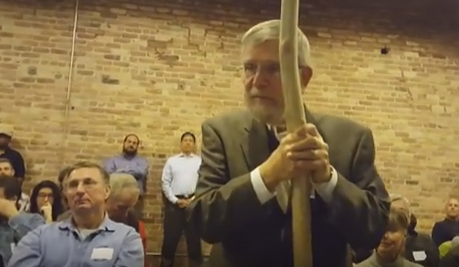
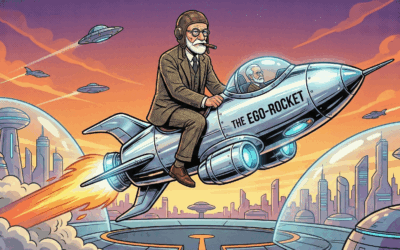
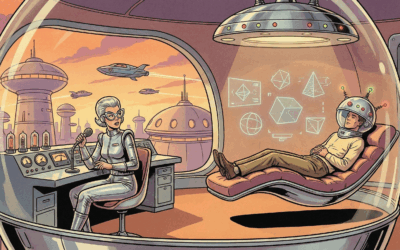


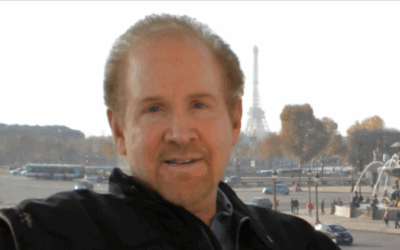

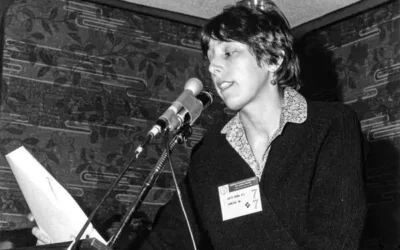
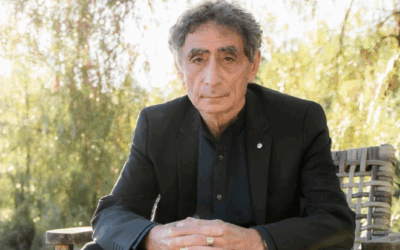
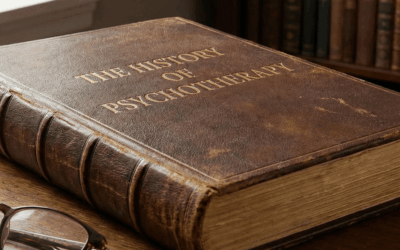
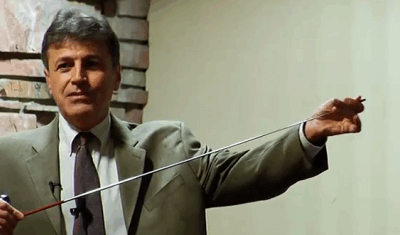

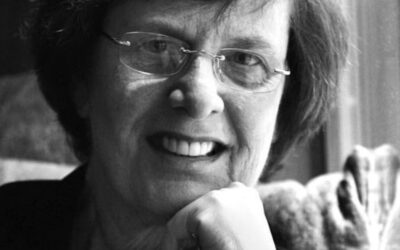

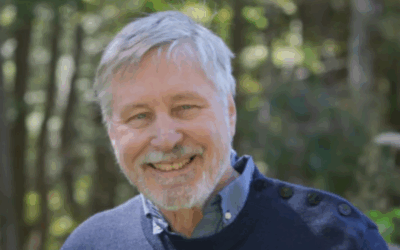
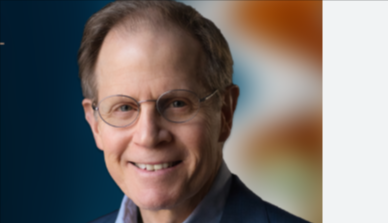
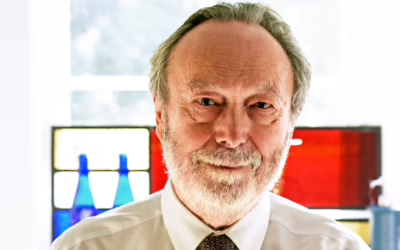
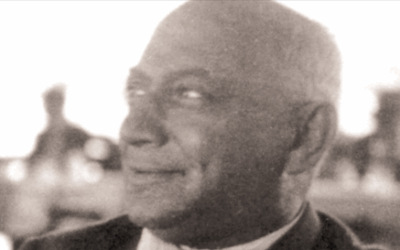
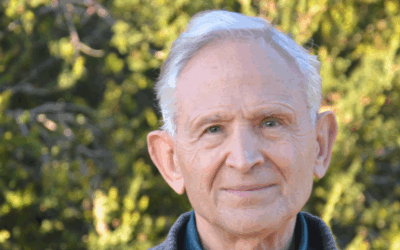
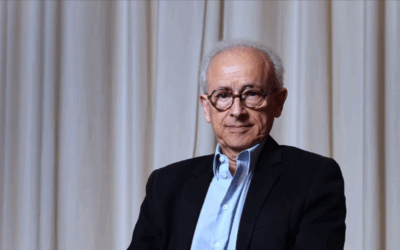
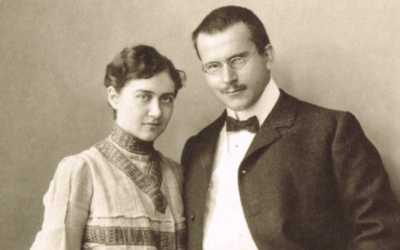
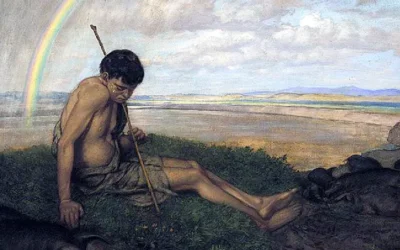

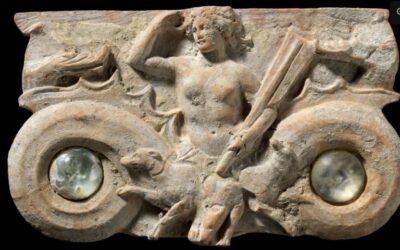
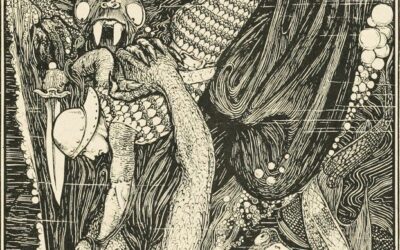
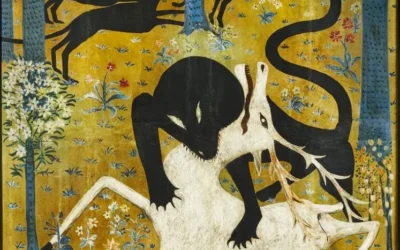
0 Comments